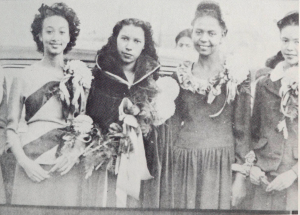
Washington High School Homecoming Queens, 1945
Two yearbooks from Washington High School in Raleigh, N.C. have been added to our site thanks to our partner, the Olivia Raney Local History Library. One is a standard edition of The Echo from 1943; the other is a special edition, The Echo Nostalgic Reflections, from 1977.
Among the pages of Nostalgic Reflections are a few spreads of Washington High School royalty: homecoming queens throughout the years. Some of the listed winners are Margaret Smith Cooper (1941), Daisy Debnam (Miss Washington High 1946), Ressie Curry (Miss Washington High 1947), Juanita Freeman (1948), Lula Poe (1949), Sarah Frances Sewell (1950), Mary E. Williams (1951), and Mildred McKay (1952).
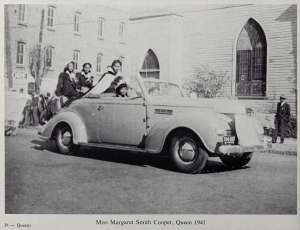
Miss Margaret Smith Cooper, Queen 1941
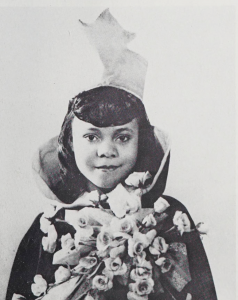
Mildred McKay, Queen 1942
Next to the homecoming spreads are photos from the alumni dance (1976), as well as championship game information from the school’s football program.
Curiously, there doesn’t seem to be any information about who succeeded Mildred McKay as homecoming queen in 1943 in The Echo—school events seem to have been a lower priority for the yearbook’s editors than academics, clubs, and favorite poems.
You can see all yearbooks from Washington High School here. To find out more about Olivia Raney Local History Library, visit their partner page or the Wake County website.
DigitalNC is proud to now host The Zebulon Record, the first contribution by our partners at Little River Historical Society. Just over 1,400 issues from this Wake County, N.C. publication are ready to view online, adding to our newspaper coverage of the greater Raleigh area.
Covering the years 1925-1956, The Zebulon Record focused on local agriculture, a main segment of Zebulon’s economy since its foundation in the early 1900’s. Tobacco, the largest local crop, is widely covered. Notices to farmers of agricultural events, such as a Boll Weevil Plague in 1941, were frequently reported. In 1932, Zebulon even held a national campaign known as the Yard and Garden Contest in an attempt to beautify the area as well as garner tourist attraction through the community’s “civic spirit and love of beauty”.
As cars became the norm around Zebulon in the 1950s, many cartoons promoting driving etiquette graced the cover of The Zebulon Record due to Zebulon’s reputation as a “speeder’s haven”. As a challenge by President Eisenhower to reduce automobile accidents, S-D Day, or Safe Driving Day, was officially observed on December 1st in Zebulon. The winning driver of the day would be awarded an “expert driving” certificate as well as 10 gallons of gas. Perhaps due to unfortunate reasons, the issue following December 1st never announced the S-D Day winner.
For a closer look at all The Zebulon Record articles mentioned as well as unmentioned, click here. For more information on the Little River Historical Society, please visit their home page here.

Today on the blog we’re happy to announce the addition of The Morrisville & Preston Progress, published in Morrisville from 1995-1999. This newspaper was contributed for digitization by Olivia Raney Local History Library, part of Wake County Public Libraries.
The Progress is a really interesting view into an area that has changed a lot in the last thirty years. During the span published in The Progress you can see a focus on development and growth, with articles describing the diminishing farm economy and the development around RDU airport and RTP. The article below, taken from the front page of the January 31, 1996 issue, talks about land being sold at a premium thanks to Morrisville’s convenient location.
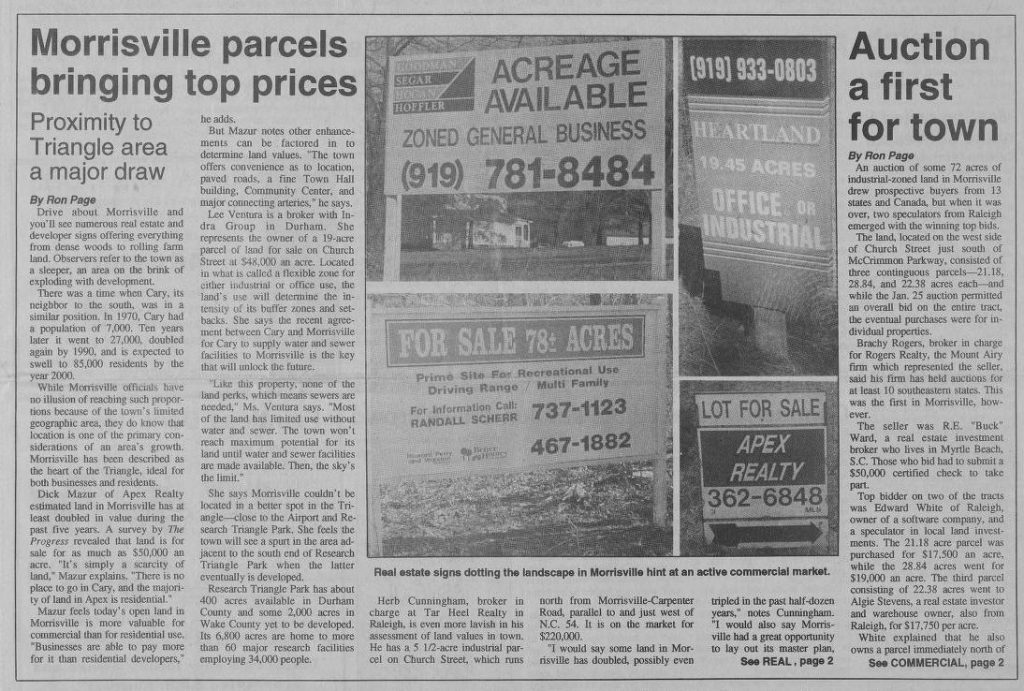
The paper also covers Preston, a community in Cary. Most of that news centers around golf; Prestonwood is a large country club with an extensive course. The September 1998 issue highlights a celebrity golf tournament, the Jimmy V Classic, that brought players like Mia Hamm, Scott Wolf, and Michael Jordan among others.
Many of the early issues include a feature entitled “Our Neighbors Speak,” which posed a current events question to Morrisville and Preston residents to get their take. Topics range from proposed federal income tax changes, to college athletics, to more local concerns. In the example below from November 1995 a number of white residents were asked their opinion about rapid growth after the population of the Triangle surpassed one million.
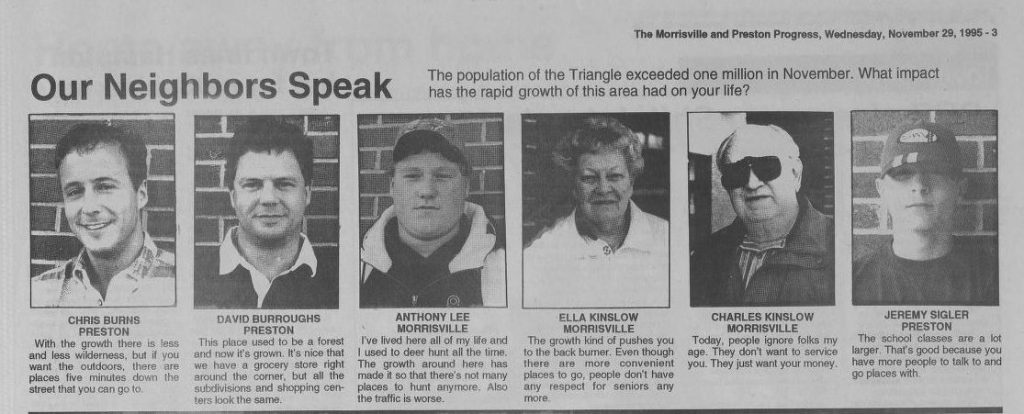
Read about Morrisville local politics (and drama!), commercial and residential development, and ongoing cultural changes in The Progress, or take a look at all of the materials we’ve digitized for Olivia Raney Local History Library on their contributor page.
We are excited to welcome new partner Fuquay-Varina Museums to DigitalNC. Their first batch with us is a set of 20 yearbooks from Fuquay Varina area schools, Fuquay Springs High School, the white school, and Fuquay Consolidated High School, the African-American school for the town before integration. The schools were combined in 1969 to form Fuquay-Varina High School, which still operates today as part of the Wake County School system.
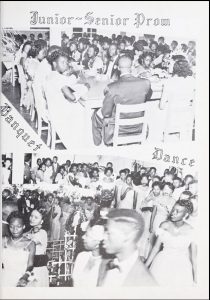
Prom photographs from the 1953 Fuquay Consolidated yearbook
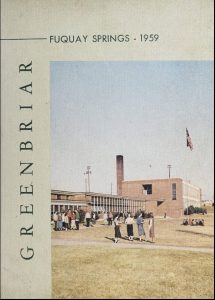
Cover of the 1959 Fuquay Springs High School yearbook
To see more yearbooks digitized on DigitalNC, visit here. And to learn more about our partner, visit their website here and their partner page here.
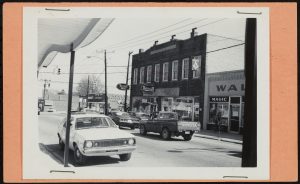
Heading east on Chatham St. in downtown Cary (Rexall, now Ashworth, Drugs on the right), 1970s
A new batch of materials from the Page-Walker Arts & History Center is now online at DigitalNC. The batch consists of research notes compiled by author Thomas M. Byrd for his 1994 book, Around and About Cary, which describes the history of Cary, NC. The notes include pages of draft edits, copies of primary and secondary sources, correspondence, census information, and various planning documents. Byrd’s notes are a great resource for those interested in the history of Cary or, more generally, the planning and composition of local history works and the overall growth of the Wake County and Triangle area of North Carolina.
Byrd’s notes are another addition to the existing Page-Walker Arts & History Center materials hosted online at DigitalNC. Please visit their website or DigitalNC partner page for more information.
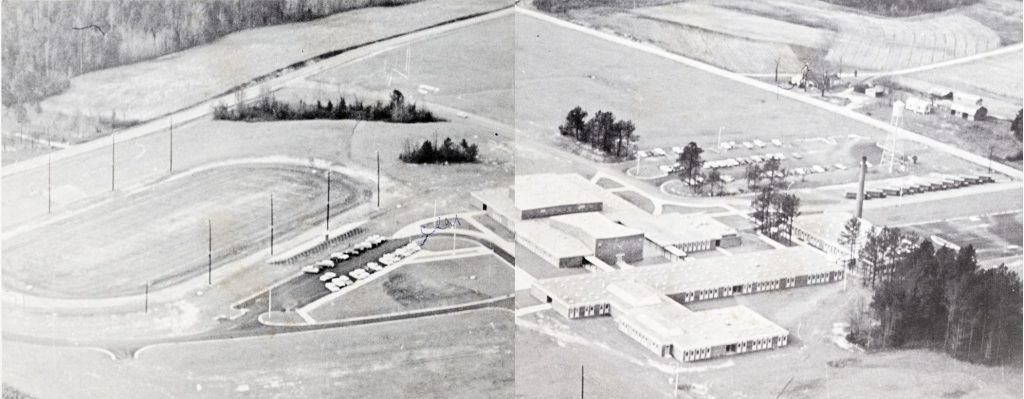
A 1966 overhead shot of the then-brand new Vaiden Whitley High School
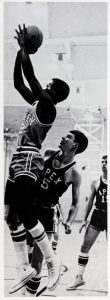
Players from the 1968 Warriors team
A new batch of several yearbooks from Wendell, NC are now online and are available on DigitalNC, courtesy of our partner, the Wendell Historical Society. This batch of The Shield from Vaiden Whitley High School stretches from 1966 to 1968.
As Vaiden Whitley High School was founded in 1966, this represents the first collection of yearbooks from VWHS, and allows us to see what its first students thought of the new high school. The 1966 Shield, a result of Wake County schools consolidating for integration purposes, made sure to note the importance of a wholesome school environment and supporting all students. These yearbooks include individual portraits, class portraits, photos of student clubs and lists of individual accomplishments, and more. Sports team accomplishments were also highlighted. For example, the 1968 Warriors team (right) defeated every team in their conference at least once to finish the season 17-9.
These yearbooks provide a valuable window into what school life was like in Wake County at the time. To see more from the Wendell Historical Society, click here to view their partner page, or visit their website.
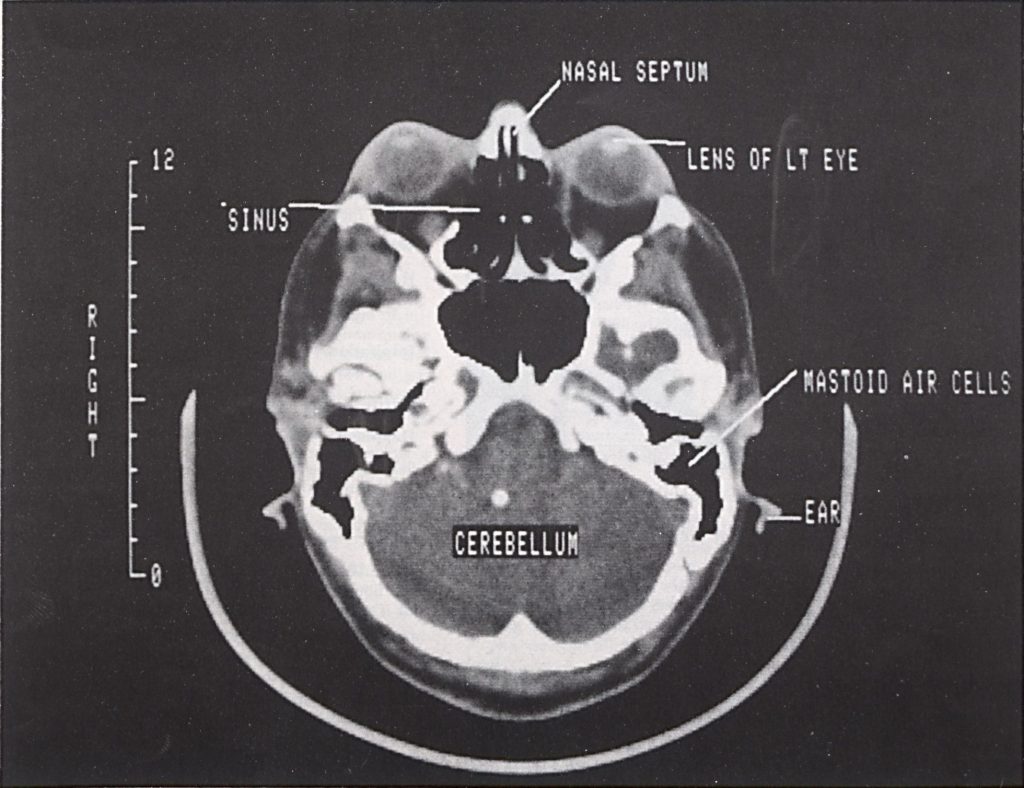
Cross-section of the base of a human skull, from a Rex Messenger cover article introducing Rex Hospital’s new CT scanner, January 1982

From an article on the benefits of breastfeeding (Nursing Perspectives, September 1992)
A newly digitized collection of newsletters from Rex Healthcare Library in Raleigh, N.C., are now available on DigitalNC. The six newsletters range from 1977-2008. The Rex Healthcare Library collection reflects major changes in the life of a hospital over the the past four decades, from attitudes toward smoking, holiday celebrations, recycling, and childcare; to the advent of computers and new medical technology.
Rex Hospital opened in Raleigh in 1894. After relocating to different Raleigh sites in 1909 and 1937, it moved to its current location at Lake Boone Trail, Raleigh, in 1980. In 1995, Rex Hospital changed its corporate name to Rex Healthcare to reflect the variety of care facilities it provides. Today, the private, not-for-profit Rex is part of the UNC Healthcare system. It is one of the largest employers in Wake County, N.C. You can learn more about the history of Rex by looking at materials the NCDHC has digitized from them, including this history published in 1957.

Stanza from a poem in the August 1995 issue of Nursing Perspectives
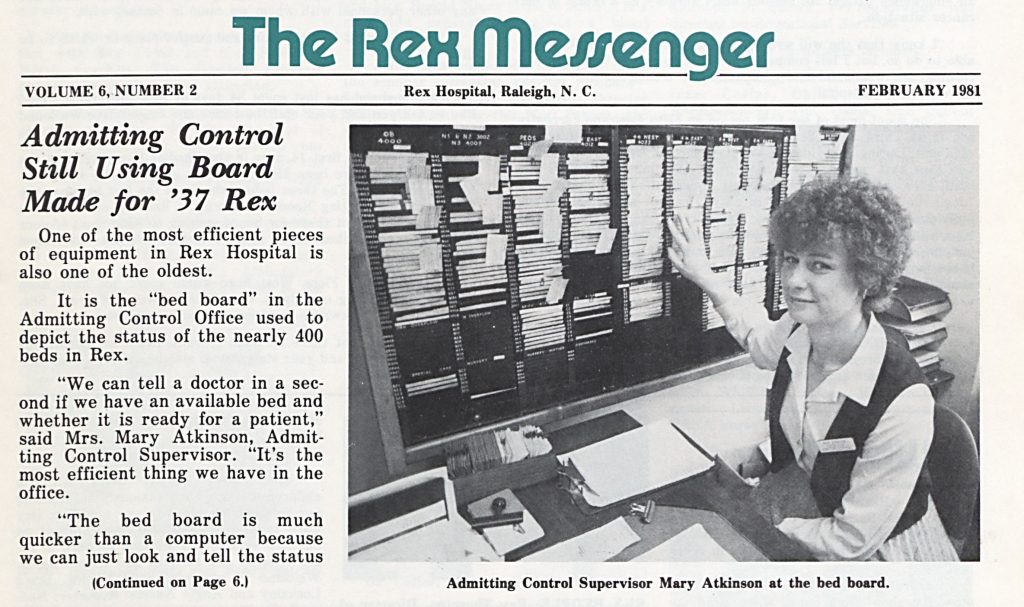 Three of the newsletters — the Rex Messenger, the Rex Hotline, and Pulse — focus on general hospital staff, employees, and friends. The Messenger is the oldest newsletter in the collection, spanning 1977-1998. It includes extensive pieces on the history of the hospital and covers the hospital’s centennial celebration in 1994. Two other newsletters, Nursing Perspectives and CaREXpress, center on the patient care division of the hospital; while RCare specifically treats the hospital’s move to electronic record-keeping. The newsletters also ran employee profiles, gave updates on hospital procedures, printed poetry and fiction by hospital workers, and published letters from patients; and they report on activities Rex Hospital sponsored in the surrounding Raleigh community.
Three of the newsletters — the Rex Messenger, the Rex Hotline, and Pulse — focus on general hospital staff, employees, and friends. The Messenger is the oldest newsletter in the collection, spanning 1977-1998. It includes extensive pieces on the history of the hospital and covers the hospital’s centennial celebration in 1994. Two other newsletters, Nursing Perspectives and CaREXpress, center on the patient care division of the hospital; while RCare specifically treats the hospital’s move to electronic record-keeping. The newsletters also ran employee profiles, gave updates on hospital procedures, printed poetry and fiction by hospital workers, and published letters from patients; and they report on activities Rex Hospital sponsored in the surrounding Raleigh community.
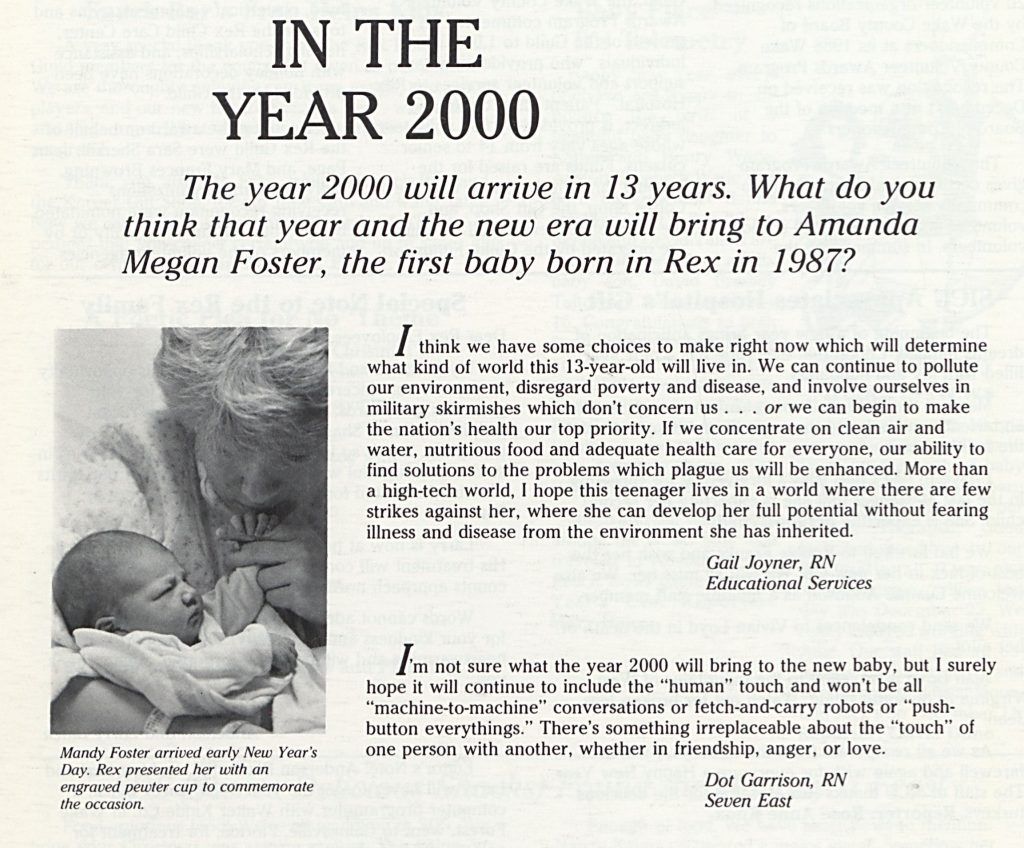
One feature in the January 1987 issue of the Messenger asked reporters to imagine what life would be like for Mandy Foster — the first child born at Rex Hospital in the new year — when she became a teenager in the year 2000. Several people suggested Mandy might work in the space program. Others speculated on how technologically savvy she would be. An RN reflected, “I’m not sure what the year 2000 will bring to the new baby, but I surely hope it will include the ‘human’ touch and won’t be all ‘machine-to-machine’ conversations or fetch-and-carry robots or ‘push-button everythings.’ ” (Read the full feature here .)
To learn more about Rex Healthcare Library, please visit their contributor page or the website. To see all of the newsletters available from the NC Digital Heritage Center, please visit here.
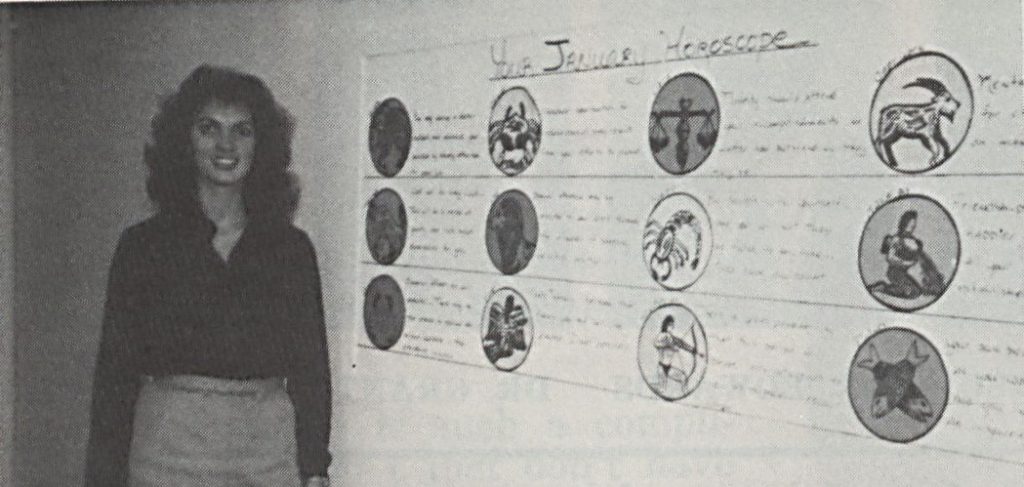
A Rex Hospital Data Control worker stands next to a horoscope bulletin board she designed (Rex Messenger, February 1979)
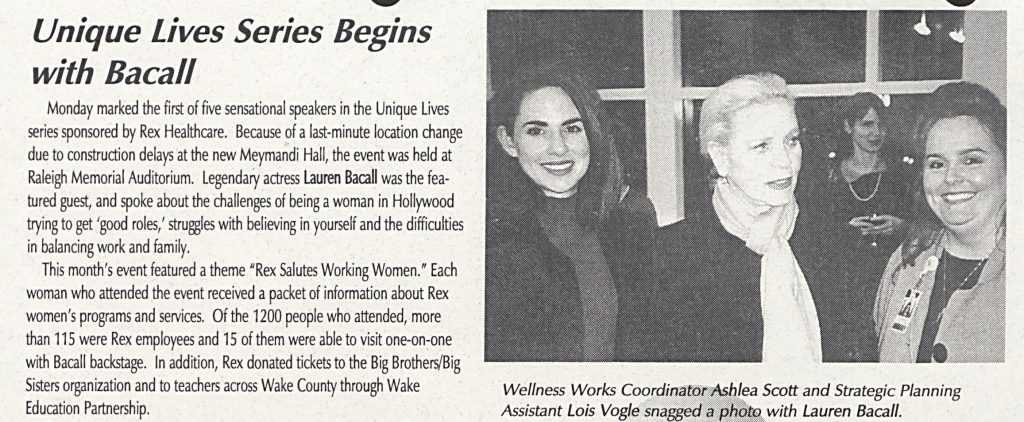
From the Rex Hotline (March 2, 2001)
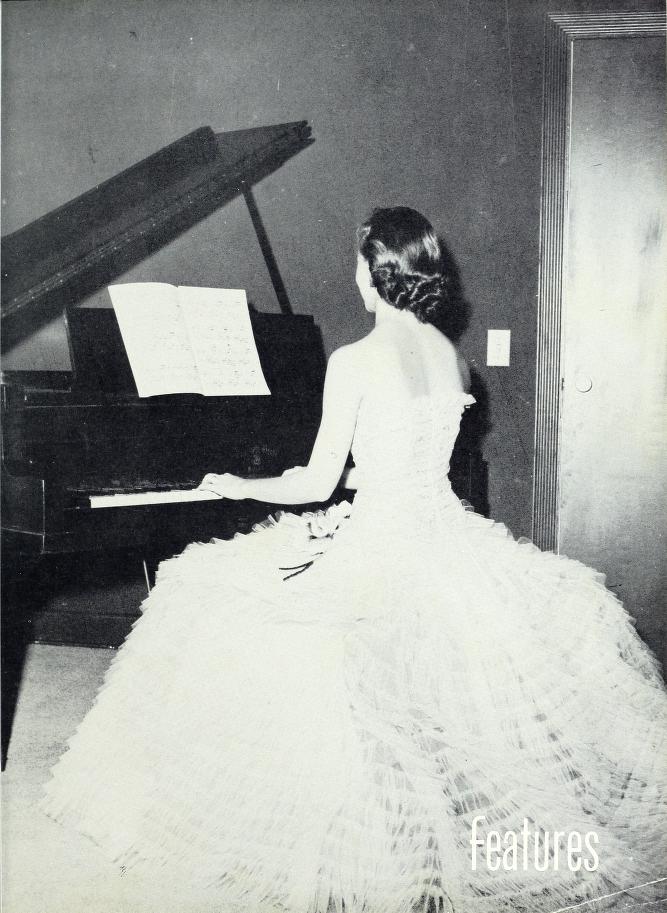
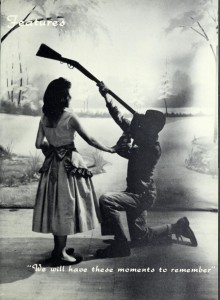
New yearbooks from the Wendell Historical Society have been added to DigitalNC. The 17 yearbooks are from Wendell High School, located in Wake County, NC, and they date from 1943 to 1965. Called “Echoes,” the yearbooks include portraits of students from first grade through senior year and feature candid shots and group shots of clubs and teams. You can view more Wendell High School yearbooks here.

First “Moonlight School” Opens in Wake County, Danbury Reporter, October 6, 1915
In the early 20th century, at least 1 in 10 North Carolinians wouldn’t have been able to read this blog post (had it been printed out, of course). Estimates from the 1910 census suggest that 140 out of every 1000 white males were illiterate; numbers were less accurate for women and African Americans, but illiteracy rates were probably higher among those populations. James Y. Joyner, the State Superintendent of Public Instruction at the time, called it a duty of the state to improve the lot of these “grown-up children.”
Adopting a model used in Kentucky, North Carolina began holding “Moonlight Schools” to educate adults who were unable to write or read English. Moonlight schools were held in the evenings so working adults could attend. They operated throughout the state and relied on volunteering teachers, university students, and local civics clubs. The article to the right, from the October 6, 1915 issue of the Danbury Reporter, describes the opening of the first moonlight school in Wake County.
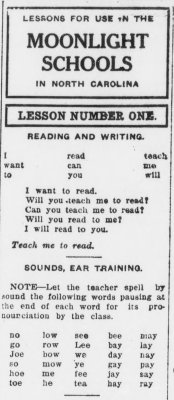
Lessons for use in the Moonlight Schools in North Carolina, The Courier (Asheboro), November 4, 1915
In October 1915, North Carolina newspapers carried articles describing Governor Craig’s proclamation of November 1915 as “Moonlight School Month.” Throughout that month papers shared sample lessons in not only reading and writing but also basic arithmetic and general knowledge. As public sentiment gathered behind the movement, local papers reported on their counties’ efforts in eradicating illiteracy: “Illiteracy doomed in Transylvania,” “The Moonlight School will Enable You to Be Master of Your Own Fate.” Articles talking about the diligence and appreciation of both the students and teachers were also common.
November 1915 saw over 10,000 adults enrolled in moonlight schools across North Carolina (Report of Director, Schools for Illiterates, of 1918-1919 and 1919-1920). While volunteer support waned in the years immediately following, the need was still dire and, in 1919, the schools were incorporated into the public school system with funds specifically earmarked by the state legislature. Over 8,000 adults were enrolled in moonlight schools in 1919-1920 (almost equally split between white and Black students).
After Joyner turned over his position as State Superintendent of Public Instruction to E. C. Brooks, the term “moonlight school” is no longer found in the official reports coming from that office. Instead, the report from 1920-1922 discusses “classes for adult beginners,” which were held in over 50 counties. The term gradually transitioned to “adult education,” although we’re unsure why “moonlight school” fell out of favor. This article from The Pilot newspaper in 1938 describes the waxing and waning of interest in promoting adult education throughout the early 20th century. It also describes how the WPA had taken up the cause, cleverly zeroing in on identifying those who signed their drivers licenses with a simple cross mark.
You can learn even more about moonlight schools by browsing through related articles in the newspapers collection on DigitalNC.
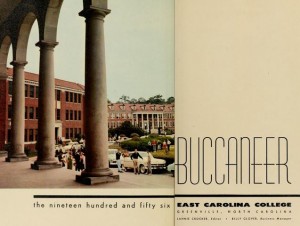
Title page from the 1956 Buccaneer, from East Carolina College, the most popular item on DigitalNC.org in 2014.
The North Carolina Digital Heritage Center had a great year in 2014. We continued to work with partners around the state on digitization projects and added a wide variety of material to DigitalNC.org, making it easier than ever for users to discover and access rare and unique materials from communities all over North Carolina.
As we look back on our work over the past year, I wanted to share some of what we’ve learned by looking at our website usage statistics. Like many libraries, the Digital Heritage Center uses Google Analytics to capture information about what’s being used on our website, who’s using it, and how they got there. While there are still lots of questions remaining about usage of DigitalNC, these stats do give us a lot of valuable information.
In 2014, more than 250,000 users visited DigitalNC.org, resulting in more than 1.8 million pageviews. While people visited our website from computers located all over the world, the greatest number by far came from North Carolina. That’s what we expected and hoped to see. More than 200,000 sessions originated in North Carolina, with the users coming from 388 different locations, ranging from over 18,000 sessions in Raleigh and Charlotte to a single visit from the town of Bolivia in Brunswick County (user location is determined by the location of their internet service provider, so this may not tell us exactly where our users are located, but it’s going to be close in most cases).
What did people use on DigitalNC? We were not surprised to find that the most popular collection remains our still-growing library of yearbooks. The North Carolina Yearbooks collection received more than 125,000 pageviews alone, followed by newspapers (44,000) and city directories (11,000). And we were pleased to learn that at least somebody is reading this blog, which received nearly 2,500 pageviews last year. The most popular blog post was our announcement about the digitization of a large collection of Wake County high school yearbooks.
We were also curious to see what single items were the most popular over the past year. The winner, with 438 pageviews, was the 1956 yearbook from East Carolina University. The second most popular was also from East Carolina, the 1930 Tecoan, followed by the 1961 yearbook from the Palmer Memorial Institute and the 1922 yearbook from Appalachian State University.
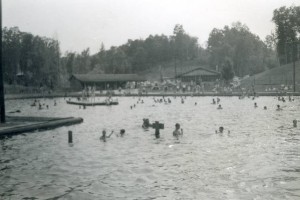
Lake Hideaway, ca. 1950s, the most popular photo on DigitalNC.org in 2014.
The most popular image on our site was from the Davie County Public Library: a black-and-white photo from the 1950s showing swimmers at Lake Hideaway in Mocksville. Other popular photos included a postcard showing the American Tobacco Company plant in Reidsville, N.C., a group of Stanly County students from 1912, and a portrait of Charles McCartney, the infamous “Goat Man” from the 1950s.
The variety of subjects, locations, and time periods in these photos is representative of the wide-ranging content available in North Carolina’s cultural heritage institutions and on DigitalNC.org. We are honored and excited to have a role in making this content accessible to everyone and look forward to sharing even more of North Carolina’s history and culture online in 2015.




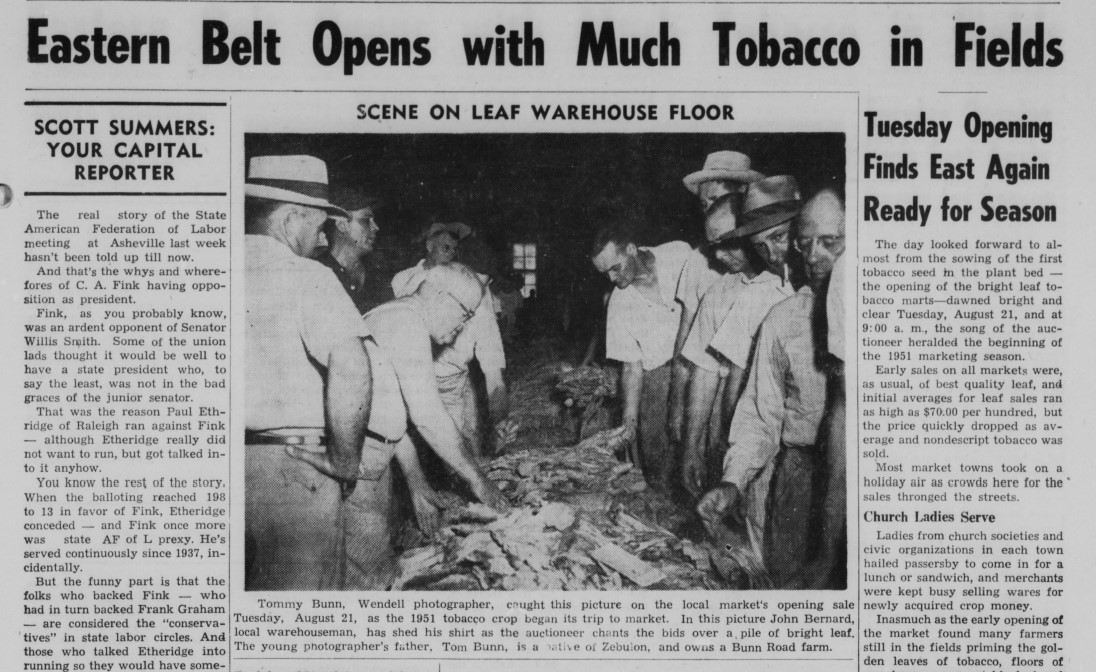
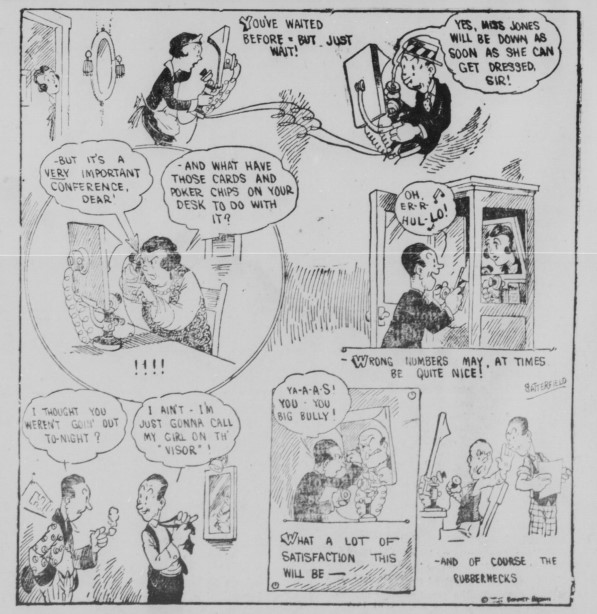











 Three of the newsletters — the
Three of the newsletters — the 








